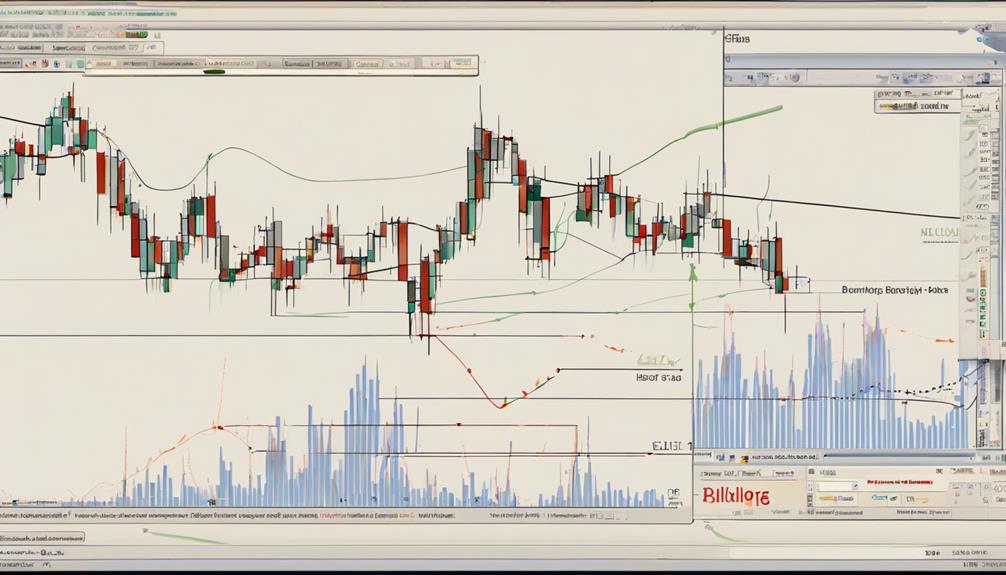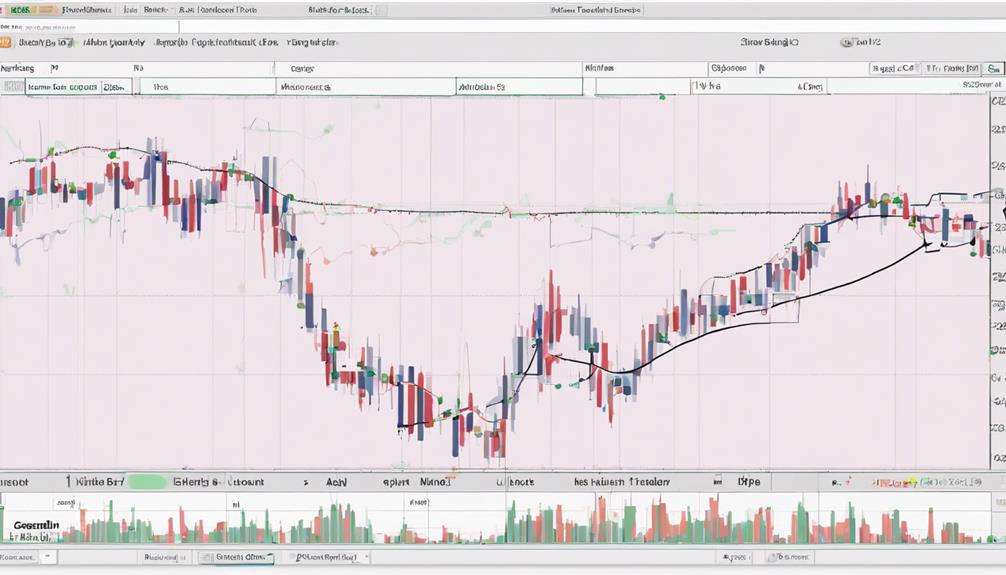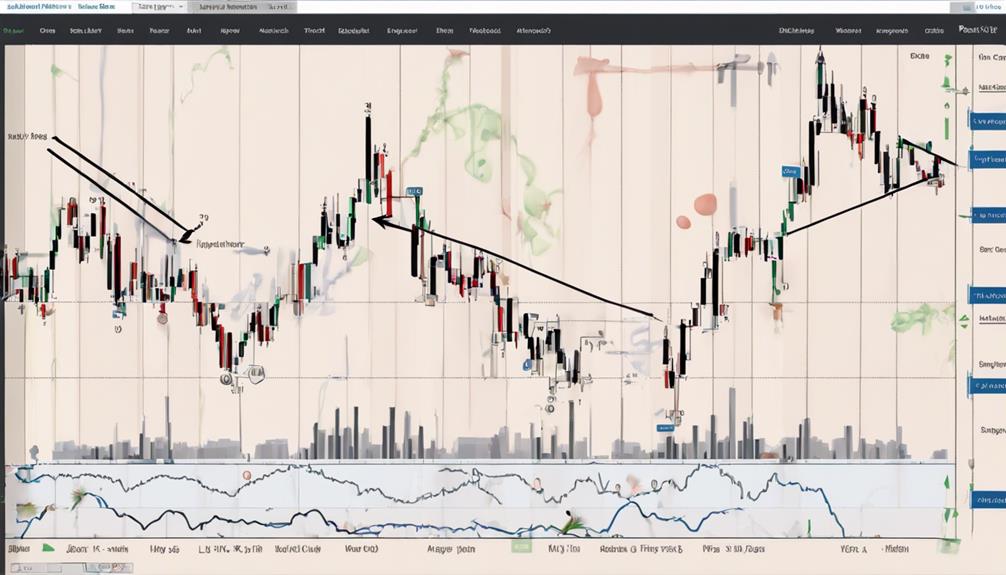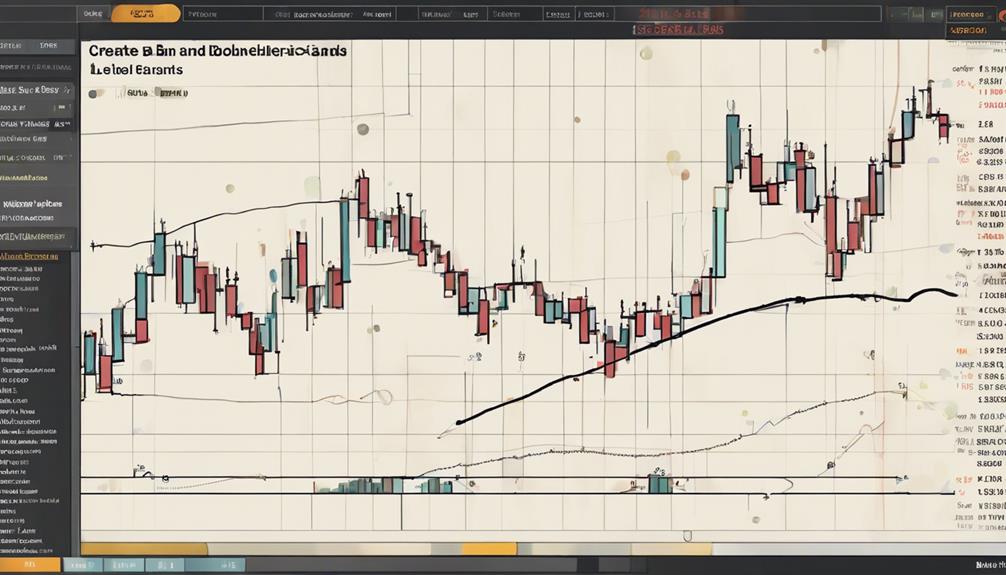You may think that Bollinger Bands are just another technical analysis tool, but in reality, they offer a range of practical applications that can enhance your trading decisions.
From identifying market trends and volatility to developing specific trading strategies like reversals and riding the bands, the versatility of Bollinger Bands is undeniable.
These applications can provide valuable insights into potential price levels and trend strength, making them a must-have in any trader's toolkit.
But there's more to uncover about how these bands can revolutionize your trading approach, especially when combined with other key indicators.
Reversals
When trading with Bollinger Bands, identifying reversals allows you to capitalize on potential price corrections by fading stocks outside the bands. Incorporating candlestick analysis enhances your ability to pinpoint precise entry and exit points during these reversal setups.
Short positions can be strategically initiated at support levels identified by Bollinger Bands, aligning with the concept of exploiting overextended moves for profitable trading decisions. Understanding trend strength and recognizing key price levels are crucial elements in effectively utilizing Bollinger Bands for reversals.
Double Bottoms

Identifying double bottoms is paramount for traders seeking to capitalize on bullish reversal patterns in the market. When using Bollinger Bands, traders watch for two consecutive lows at similar price levels, indicating a potential trend reversal.
The first bottom, often with high volume, signals a possible shift in momentum. Subsequent price action retesting recent lows within the lower Bollinger Band can confirm the double bottom formation. A decrease in volume during the second low suggests weakening bearish momentum.
Traders await a breakout above the pattern's neckline for confirmation, anticipating a price rally. Understanding these dynamics within the context of Bollinger Bands can help traders recognize and act upon double bottom formations effectively for profitable trading strategies.
Riding the Bands

Utilizing the Riding the Bands strategy in trading involves strategically avoiding selling at upper/lower bands and instead focusing on breakout setups with expanding price and volume. Traders should seek confirmation of a breakout before entering a trade with this approach.
Key indicators for successful implementation include Bands tightening before a breakout and a noticeable increase in volume during the breakout. By refraining from selling at the upper band or buying at the lower band, traders can take advantage of potential price movements and trends.
The Riding the Bands strategy aims to identify price movements breaking out of the bands, presenting opportunities for profitable trades. It's essential to stay vigilant and patient, waiting for the right signals to make informed trading decisions.
Bollinger Band Squeeze

The Bollinger Band Squeeze signifies a period of low volatility characterized by the narrowing of the bands. During this phase, traders observe the following key points:
- It often precedes a significant price breakout or sharp move in the market.
- Traders use the squeeze to anticipate potential explosive price movements.
- Squeezes can be identified by low Bollinger Band Width readings.
- Bollinger Band Squeeze strategies involve waiting for volatility expansion after the squeeze period.
What Are the Key Applications of Bollinger Bands in Trading Analysis?
Bollinger Bands trading signals are widely used in trading analysis for several key applications. They can help traders identify overbought or oversold conditions, track market volatility, and anticipate potential trend reversals. Additionally, these signals can assist in determining entry and exit points for trading positions.
How Can Bollinger Bands be Applied to Swing Trading?
When applying bollinger bands swing trading strategies, traders can use the bands to identify overbought and oversold conditions. By waiting for the price to reach the upper or lower band, traders can time their entries and exits more effectively, increasing the chances of profitable swing trades.
Middle Bands

During periods of low volatility indicated by the Bollinger Band Squeeze, traders often rely on the middle band as a crucial reference point for assessing trend direction and potential reversals.
The middle band, typically a 20-period simple moving average, serves as a dynamic support or resistance level during price pullbacks or retracements within the Bollinger Bands framework.
Traders keenly observe for bounces or reversals off the middle band to confirm the continuity of a trend. A failure of prices to maintain levels above the middle band can indicate a possible trend reversal or weakness in the ongoing trend.
Therefore, the middle band plays a vital role in helping traders gauge the strength and sustainability of price movements within the Bollinger Bands setup.
Frequently Asked Questions
What Is the Application of Bollinger Bands in Trading?
In trading, Bollinger Bands serve as a valuable tool for identifying overbought or oversold conditions, signaling potential price reversals when the price breaches the upper or lower bands. They help measure market volatility and spot trading opportunities.
What Is the Best Trading Strategy Using Bollinger Bands?
Looking for the best trading strategy with Bollinger Bands? Identify reversals, spot overbought/oversold conditions, and use candlestick analysis for precise entries/exits. Seek specific price patterns in the bands and trade with discipline for optimal results.
What Is the Trend in Trading With Bollinger Bands?
To understand the trend in trading with Bollinger Bands, analyze price action relative to the bands for confirmation. Movement above the middle band signals a bullish trend, while movement below indicates a bearish trend.
Which Indicator Pairs Well With Bollinger Bands?
When trading with Bollinger Bands, the Relative Strength Index (RSI) pairs well to confirm overbought or oversold conditions. It's a popular choice among traders for its ability to complement Bollinger Bands effectively.
Conclusion
Congratulations! You've now mastered the top 5 applications of Bollinger Bands in trading. With this knowledge, you're equipped to navigate the complex world of market volatility and trends, identify potential price levels and trend strength, and develop effective trading strategies.
Keep riding the bands, spotting reversals, and squeezing out profits. Remember, the middle bands hold the key to unlocking even greater trading success.
Happy trading!
